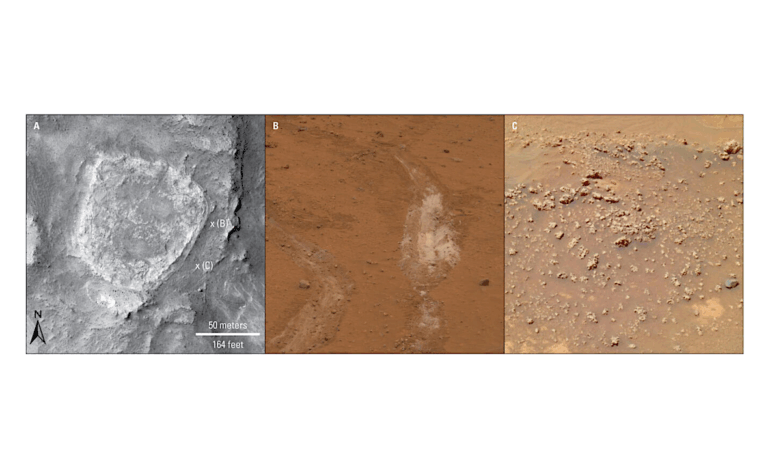Exploring Mars: Could Ancient Hot Springs Resemble Yellowstone?

Research into hydrothermal activity at Yellowstone National Park offers valuable insights into the geological history of Mars, suggesting that the red planet may have once harbored conditions similar to those found in the famous national park. Currently characterized by a cold, dry climate with a thin atmosphere, Mars possesses frozen water locked in underground ice and polar ice caps. However, evidence indicates that billions of years ago, it featured a thicker atmosphere with a warmer, wetter environment, potentially supporting active volcanic activity and hot springs.
As Mars has captivated human interest for centuries, modern exploration has provided substantial data about its surface. Since the 1960s, spacecraft missions have evolved from initial flybys to sophisticated orbiters, landers, and rovers. Presently, seven active spacecraft orbit Mars, while the rovers Curiosity and Perseverance actively study the planet’s surface conditions.
Despite the absence of evidence for advanced life forms or artificial canals, Mars displays signs of dynamic surface processes. Observations reveal features such as migrating sand dunes, dust devils, and landslides, along with remnants of past volcanism, including large volcanoes and lava flows. Importantly, researchers have identified channels and deposits indicative of flowing liquid water, as well as various hydrated minerals and silica deposits.
The discovery of silica deposits on Mars has drawn parallels to those found in Yellowstone. Silica sinter, an amorphous form of silicon dioxide, forms from hydrothermal fluids that cool upon reaching the surface, precipitating layered deposits around geysers and hot springs.
A significant finding from NASA’s Mars Exploration Rover, Spirit, in 2007 revealed silica deposits near a geological feature known as Home Plate within the Gusev Crater. These deposits indicate a history of hydrothermal activity, associated with volcanic processes. The presence of silica suggests that the region may have once supported a hydrothermal system, albeit on a smaller scale than that of Yellowstone.
The silica deposits on Mars are of great interest to astrobiologists. On Earth, similar deposits often harbor microbial life, making them prime targets in the quest for evidence of ancient life on Mars. Notably, the structures observed by Spirit display features resembling stromatolites, which are formed through the interaction of biological and geological processes. While these Martian structures are composed of silica, they have not yet been confirmed to contain organic material, leaving their origins primarily geological at this stage.
Understanding the microorganisms that thrive in Yellowstone’s hot springs and the geological evidence they leave behind could significantly contribute to astrobiology, particularly in addressing fundamental questions about the existence of life beyond Earth.
Beyond Mars, geyser activity has been observed on some of the icy moons in the outer solar system. Notably, Triton, one of Neptune’s moons, and Enceladus, a moon of Saturn, exhibit signs of active geysers. Additionally, Europa, a moon of Jupiter, is believed to contain a subsurface ocean of liquid water beneath its icy crust, potentially hosting geyser activity as well. NASA’s Europa Clipper mission, set to launch in October 2024 and arrive in 2030, aims to investigate these intriguing possibilities further.
Yellowstone serves as a critical laboratory not only for Earth science but also for planetary science research. With its rich history of caldera-forming volcanism, geothermal activity, and unique microbial life, the park continues to inspire and inform our understanding of other celestial bodies. For further insights into hot spring deposits on Mars, refer to the publication by Ruff et al. (2020), titled “The case for ancient hot springs in Gusev Crater, Mars,” published in the journal Astrobiology.
This exploration of Yellowstone and its implications for Mars underscores the interconnectedness of planetary science and astrobiology, revealing how studies of our own planet can illuminate the mysteries of others.






